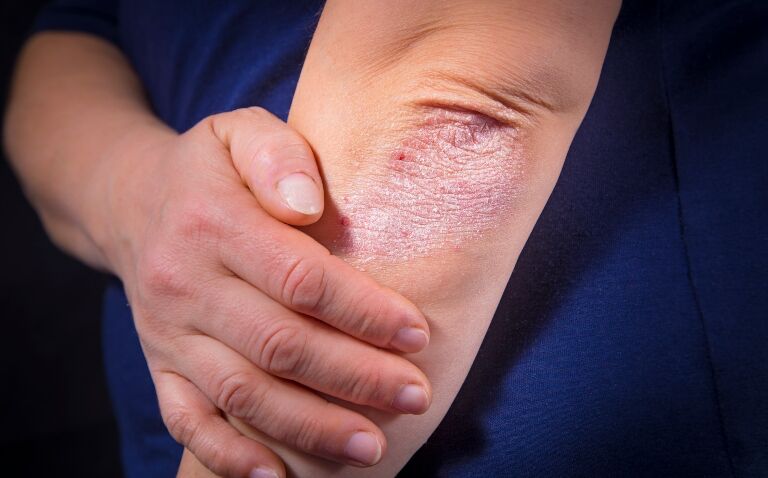Topical roflumilast is being increasingly trialled for a number of skin conditions but how effective is it, and will it take centre stage in the field of dermatology? Rod Tucker investigates.
Oral roflumilast is licensed for maintenance treatment in severe chronic obstructive pulmonary disease. Its mode of action relates to the suppression of inflammation, but this benefit extends far beyond respiratory diseases.
Roflumilast inhibits the enzyme phosphodiesterase 4 (PDE4), which hydrolyses cyclic adenosine monophosphate (cAMP), a secondary messenger within cells that is involved in many biological processes in the body. With research suggesting that higher levels of cAMP supress inflammation, PDE4 inhibitors effectively suppress the production of inflammatory markers.
PDE4 inhibitors have become a promising class of drugs with a potential role in a number of therapy areas such as pulmonary, dermatological and neurological diseases. To date, there are two further PDE inhibitors available: apremilast, which is an established oral therapy for psoriasis, and crisaborole, a topical agent used to treat atopic eczema.
But how effective is topical roflumilast in the management of skin diseases?
Psoriasis management
Topical roflumilast 0.3% has gained gained FDA approval for use in patients with plaque psoriasis. In the two trials leading to FDA approval, disease severity was assessed by a score of ‘clear’ or ‘almost clear’ and a two-point improvement on the Investigator Global Assessment (IGA) scale. This endpoint was achieved by 41.5% and 36.7% of patient treated with topical roflumilast compared to 5.8% and 7.1% with placebo.
In addition, roflumilast has also been found to significantly improve symptoms of scalp psoriasis. But, an added bonus for the drug, is that it is also effective and approved for psoriasis affecting intertriginous sites. Management of intertriginous, or inverse, psoriasis, is a therapeutic challenge, as noted by a recent systemic review which concluded that there is a lack of good quality evidence upon which to base treatment recommendations.
Although clinically distinct from psoriasis, seborrhoeic eczema is associated with an inflammatory milieu characterised by several cytokines. In a recent phase 2a, double-blind, vehicle-controlled trial, researchers investigated the efficacy of a roflumilast 0.3% foam in patients with the condition. Participants assigned to roflumilast saw significant improvements in the IGA score (73.8%) compared the the vehicle group (40.9%), and there were also signification reductions in pruritus.
Treating atopic eczema
PDE4 inhibition is also a potentially valuable target in atopic eczema, as demonstrated by crisaborole, which is a proven effective treatment. However, a recent turn of events has provided the manufacturer of topical roflumilast, Arcutis Biotherapeutics, with a distinct advantage in the topical treatment of atopic eczema, particularly in Europe.
In the UK, NICE has not provided a recommendation for the use of Pfizer’s crisaborole in atopic eczema, after the manufacturer withdrew its evidence submission. Similarly, in 2022, the marketing authorisation for crisaborole in the EU was withdrawn. As a result, the drug, is not recommended in the 2022 European guidelines on the management of atopic eczema.
Nevertheless, the position adopted by the UK and EU is in sharp contrast to the US, where the most recent iteration of the American Academy of Dermatology guidelines on atopic eczema do include a recommendation to use crisaborole.
Although roflumilast now has an advantage over crisaborole in the European market, initial findings for the drug in atopic eczema were disappointing. The results of a phase 2 proof-of-concept trial using two strengths of the drug (0.15% and 0.05%) found that neither strength improved Eczema Area and Severity Index (EASI) scores compared to the vehicle cream.
In contrast, the most recent data are more encouraging. In an abstract that combined two phase 3 trials in patients with atopic eczema, those assigned to roflumilast 0.15% cream achieved a significantly higher treatment success (p < 0.0001) compared to vehicle in both trials.
Next steps for roflumilast
Arcutis Biotherapeutics appears to have great ambitions for its drug. Some work with the PDE4 inhibitor apremilast, demonstrated an ability to control the progression of vitiligo. Moreover, given that vitiligo is mediated via oxidative stress and that roflumilast is able to reduce oxidative stress, the drug may also be of value in this condition.
In preliminary work, it was shown that roflumilast enhanced melanin synthesis when combined with forskolin, a cAMP stimulator, but only exhibited a slight influence on melanogenesis when used alone. Although this indicates a potential role in vitiligo, which is reflected on the manufacturer’s website, this is not an active area of research.
Finally, with evidence from a trial demonstrating that apremilast improved disease severity in papulopustular rosacea, a trial of roflumilast in facial papulopustular rosacea is currently recruiting patients.
There is now mounting evidence to suggest that topical roflumilast has the potential to make an important impact on the treatment landscape of psoriasis, seborrhoeic and atopic eczema and possibly rosacea. But exactly where the drug might sit in the treatment ladder for these conditions is uncertain given the absence of studies with active comparators.
Nonetheless, any effective addition to the clinician’s therapeutic armamentarium in the fight against skin diseases is to be welcomed. With Arcutis Biotherapeutics having only just begun its journey with topical roflumilast, it remains to be seen whether the drug will ultimately achieve the status of a dermatological panacea.










